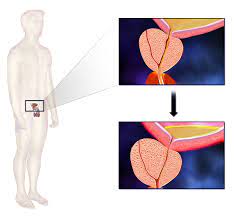Introduction
Stem cells are undifferentiated cells that have the potential to develop into different types of cells in the body. They are found in all multicellular organisms, including humans. There are two main types of stem cells: embryonic stem cells and adult stem cells.
Embryonic stem cells are derived from the inner cell mass of a blastocyst, a 5-day-old embryo. They are pluripotent, meaning that they have the potential to develop into any type of cell in the body. Embryonic stem cells are being studied for their potential use in regenerative medicine, which is a field of medicine that aims to repair or replace damaged tissues and organs.
Adult stem cells are found in various tissues throughout the body, such as bone marrow, blood, and fat. They are multipotent, meaning that they have the potential to develop into a limited number of types of cells. Adult stem cells are already being used in stem cell therapy to treat certain diseases, such as leukemia and lymphoma.
Induced pluripotent stem cells (iPSCs) are a type of stem cell that is created from adult cells. They are pluripotent, like embryonic stem cells, but they do not have the same ethical concerns. iPSCs are being studied for their potential use in regenerative medicine and stem cell therapy.
Stem cell therapy is a type of cell therapy that uses stem cells to replace or repair damaged cells in the body. It is still in its early stages of development, but it has the potential to revolutionize the treatment of many diseases and conditions.
Regenerative medicine is a field of medicine that aims to repair or replace damaged tissues and organs. Stem cell therapy is one type of regenerative medicine, but there are other approaches as well, such as tissue engineering and gene therapy.
Applications of stem cells
Stem cells have the potential to be used in a wide range of medical applications, including:
- Regenerative medicine: Stem cells can be used to repair or replace damaged tissues and organs. For example, stem cells are being studied for their potential to treat diseases such as Parkinson’s disease, Alzheimer’s disease, spinal cord injury, and diabetes.
- Cancer treatment: Stem cells can be used to treat certain types of cancer, such as leukemia and lymphoma. Stem cell transplants can be used to replace bone marrow cells that have been destroyed by cancer or chemotherapy.
- Drug discovery and development: Stem cells can be used to test new drugs and therapies before they are used in humans. This can help to ensure that new drugs are safe and effective.
- Personalized medicine: Stem cells can be used to create personalized treatments for patients. For example, stem cells can be used to create new skin cells for patients with burns or severe wounds.
Challenges and ethical concerns
There are a number of challenges and ethical concerns associated with stem cell research and therapy. One challenge is that it can be difficult to differentiate stem cells into the desired type of cell. Another challenge is that stem cell transplants can have serious side effects, such as graft-versus-host disease.
There are also ethical concerns associated with the use of embryonic stem cells. Some people believe that it is wrong to destroy embryos in order to harvest stem cells. Others believe that embryonic stem cells have the potential to become human beings and should therefore be protected.
Conclusion
Stem cells are a powerful tool with the potential to revolutionize medicine. However, there are still a number of challenges and ethical concerns that need to be addressed before stem cell therapy can be widely used.



